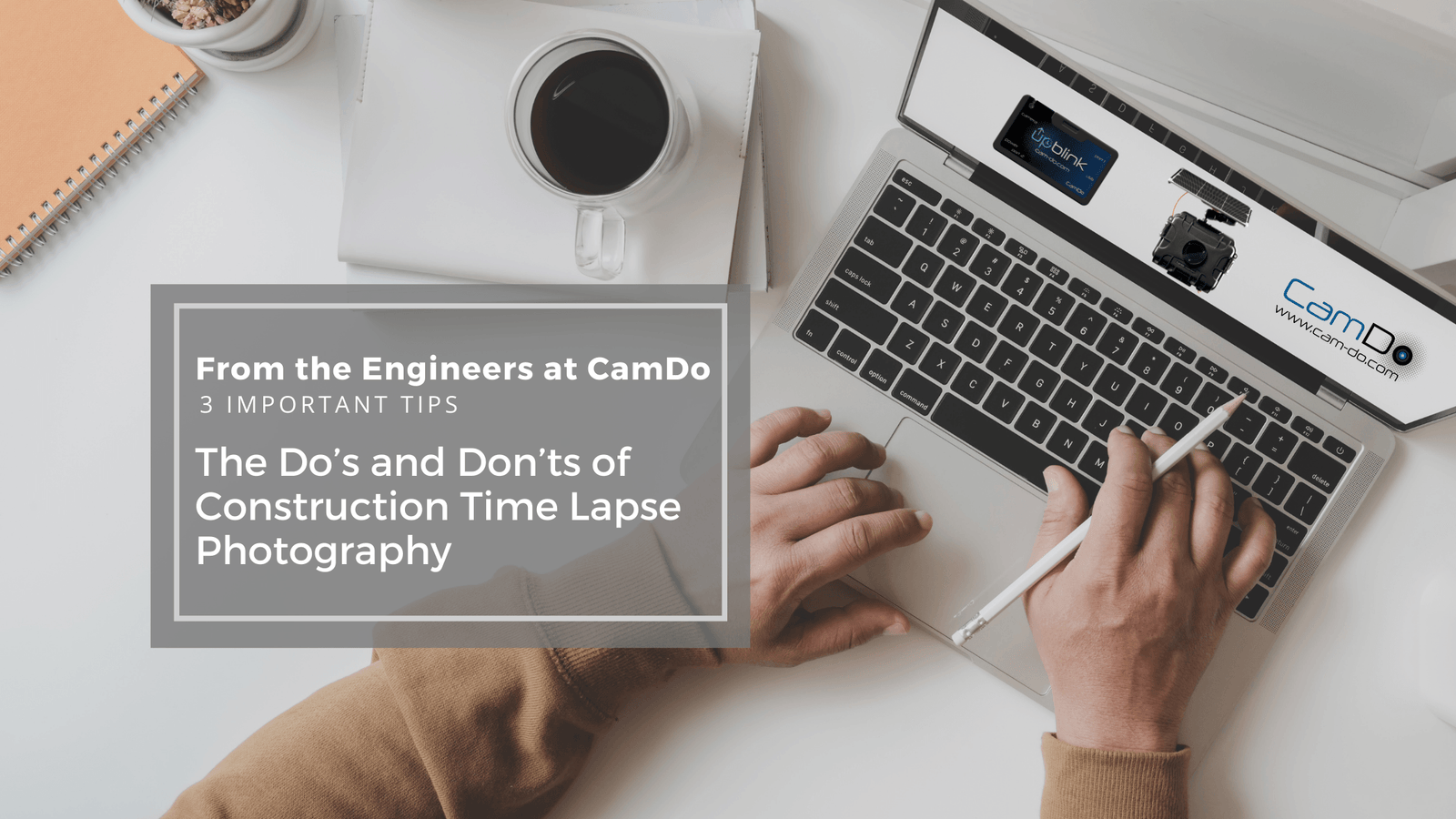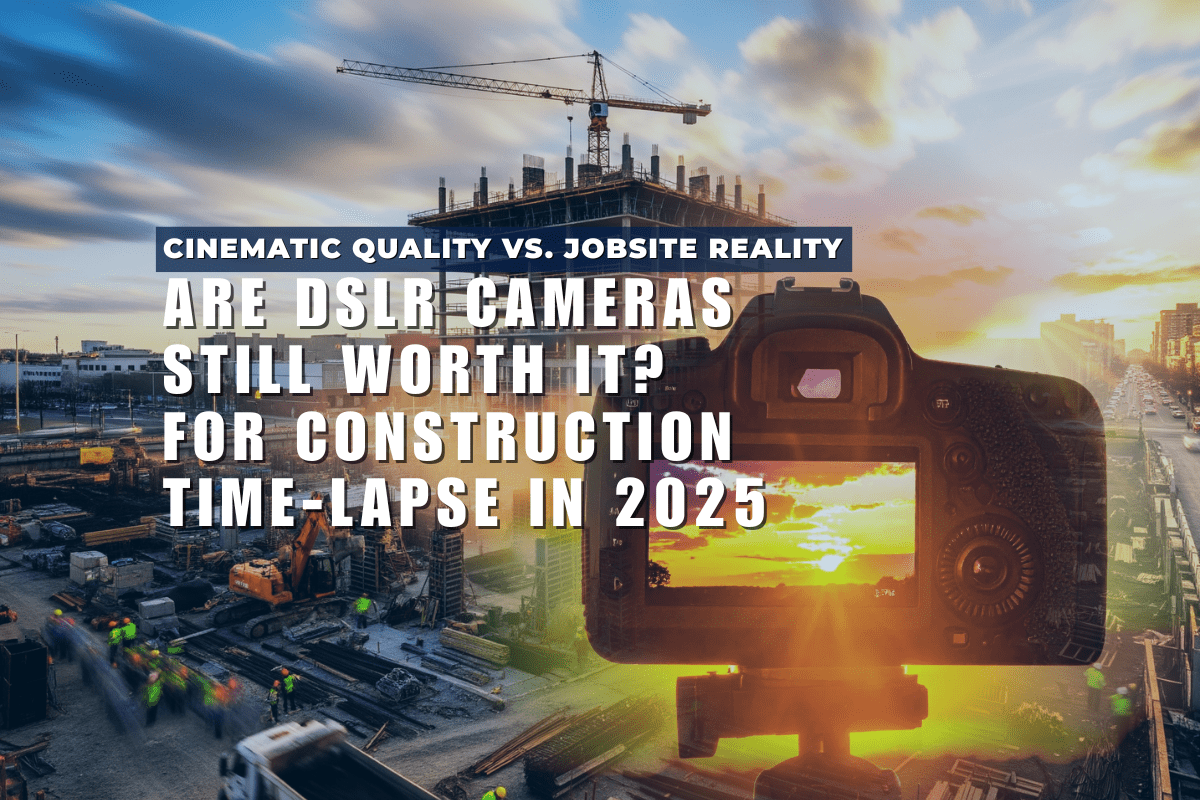This is the first in a series that will cover the most important Do’s and Don’ts for construction time lapse photography. Time lapse photography in the construction industry can have many uses, from marketing videos to site monitoring. These simple strategies will help you make the best use of time lapse for your company.
Time Lapse Do’s
1. Identify the Purpose of Your Time LapseThe way you set up your time lapse will depend on its use. For example, if you are creating a marketing video, our time lapse calculator will help you determine the interval between shots.
But, if you’re using time lapse for remote monitoring, you may want to reduce the interval time by a factor of 2-3. While having more images for remote monitoring can be an advantage, you will need to deal with an abundance of images when compiling them at the end of the project.
These are the main items to consider when identifying the purpose for your shoot:
- How long is the overall activity - hours, days, months, or years?
- What should be the interval between shots?
- What should be the length of the final video clip? How many frames are required to achieve this?
- How much memory do I need?
- How much power do I need?
- Do I need an internet connection? If so, is WiFi available or do I need a 4G Modem/Hotspot?
Composition refers to how the elements of a photo are arranged. It’s key to making your construction time lapse video impressive and compulsory viewing.
You can set up a technically correct shoot, but if your camera is pointing into the sun or poorly framed, the results will speak for themselves. For example, if your camera gets full sunlight at some point during the day, you’ll end up with poor quality images. If you are trying to capture a construction zone, but the sides of the building aren’t in the shot, your result won’t meet your goals.
Make sure to scope out your location and take some test shots to see what appears in the frame. If you’re using the GoPro camera, the camera’s WiFi can be used with the GoPro App to preview the angle and field of view for each image on your smartphone, tablet, or laptop. Alternatively, you can use an HDMI viewer.
3.Use a Time Lapse Calculator to Identify the Interval Between Shots
You’ll need to do some math to determine what interval between shots you should use. CamDo has a simple but powerful time lapse calculator to guide you through it. We highly recommend using our calculator while you’re reading the information below.
Different scenarios require different intervals to best capture the action for your construction time lapse project. Some suggested time lapse intervals for different construction project lengths are as follows:
Short Construction Projects
- Assumed Elapsed Time: 1 day to 1 week
- Assumed Final Video Length: 30 seconds
- Suggested Intervals: Between 1 to 5 minutes
Medium Construction Projects
- Assumed Elapsed Time: 1 month to 2 years
- Assumed Final Video Length: 120 - 750 seconds
- Suggested Intervals: Between 5 to 30 minutes
Long Construction Projects
- Assumed Elapsed Time: 6 months to 2 years
- Assumed Final Video Length: 90 seconds
- Suggested Intervals: Between 30 to 90 minutes
Due to the long-term nature of construction, different phases happen at different speeds, and your interval should change. You might want a 5-minute interval as a crane erects structural steel, but then 30 minutes for slow excavation.
Time Lapse Don’ts
1. Don’t Attempt to Time Lapse Everything: Identify the Length of the Activity
This is the number one thing to get right. Monitoring a construction site over many months or years is very different from capturing the growth of plants over a few hours or days.
Be sure you have an accurate estimate of your elapsed time to plan the interval between shots. Construction can often go longer than planned, so add a little extra time to the overall length of the estimated shoot if you think there’s a chance that your project will last longer than your original estimate.
2. Don’t Treat All Time Lapse Shoots the Same
Using the right settings for the right purpose is critical. Our blog outlines some time lapse settings for different scenarios like this post with more information about determining your time lapse interval.
3. Don’t Forget to Acquire All the Gear You’ll Need
The following list shows the CamDo gear that best addresses the needs of a successful shoot. Our most common 4K resolution construction time lapse setup includes:
- UpBlink
- SolarX or DryX Enclosures
- External battery (V50)
- GoPro HERO5, or HERO7
- 64 GB U3 Rated SD Card
- CloudX Pro and CloudX Pro Plus
Further detail on each product is explained by clicking on the link to the product page for each item.




